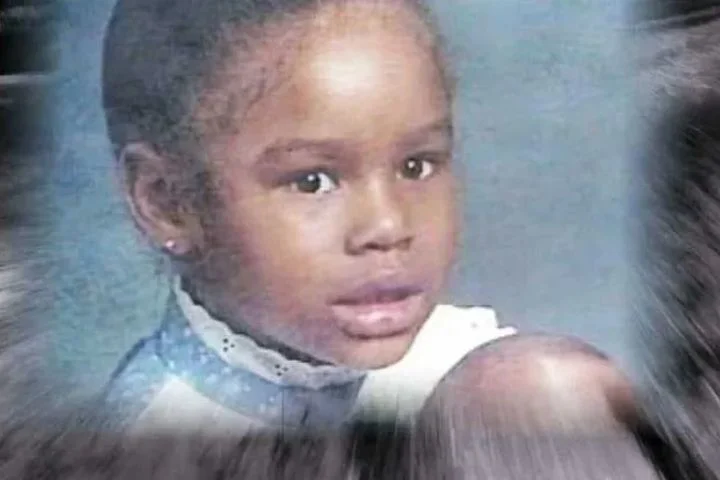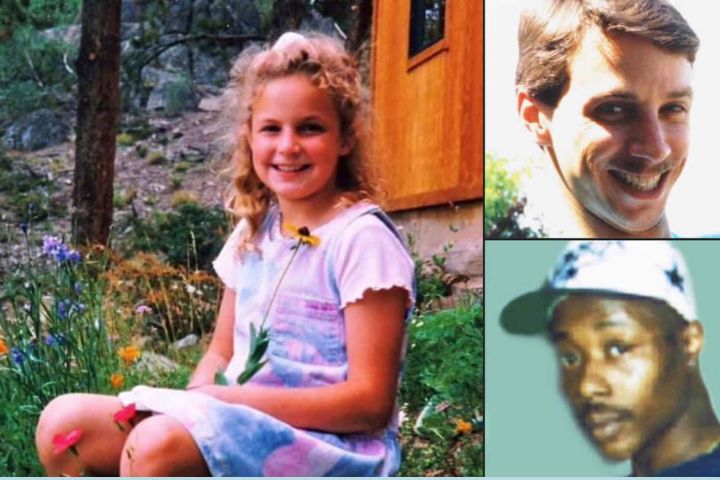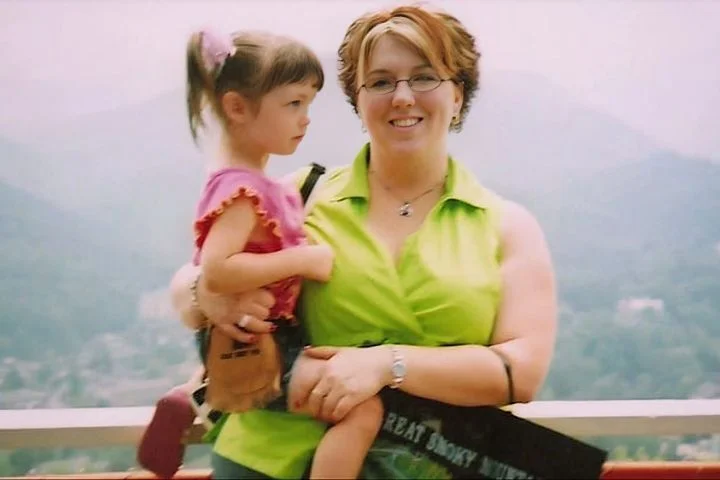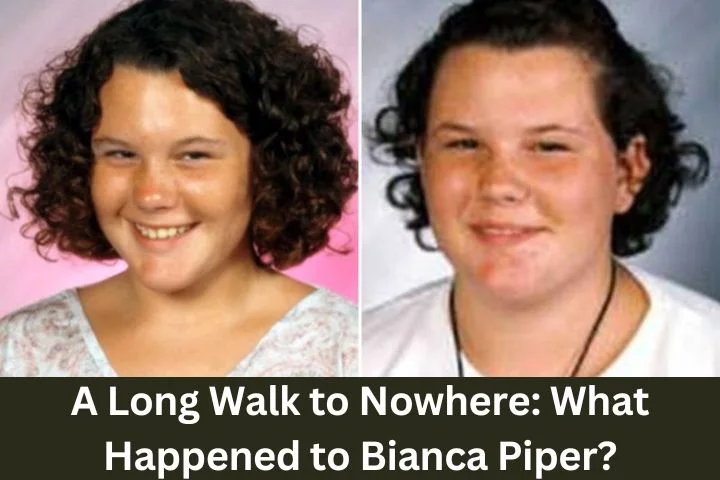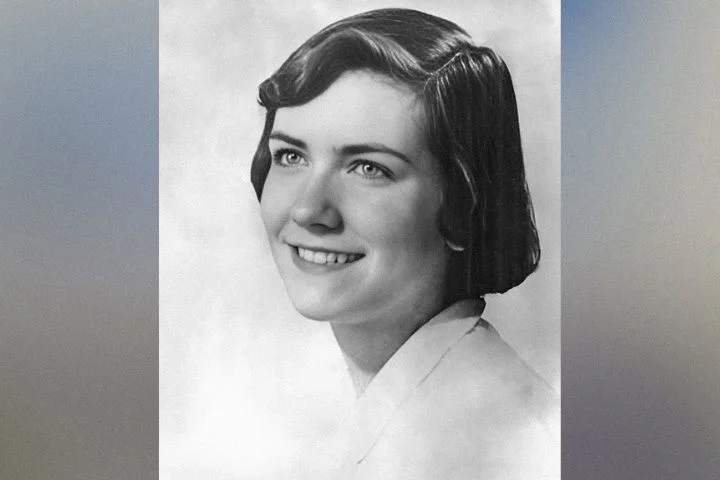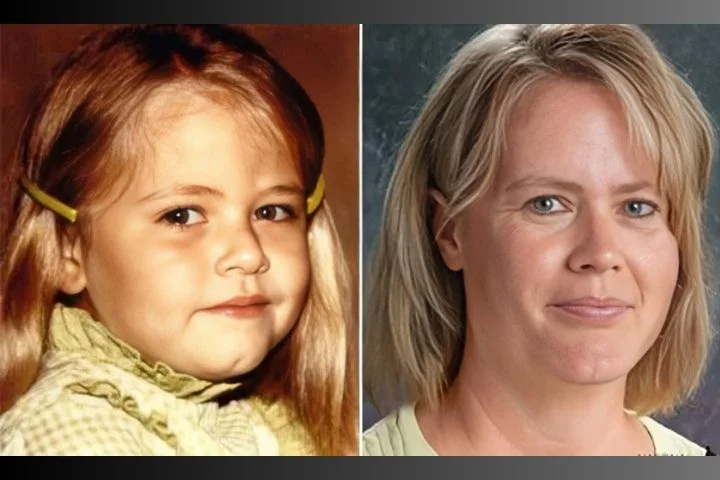Daffany Tullos lived with her grandparents, John and Shirley Tullos, in Jackson, Mississippi, but her mother lived nearby and she saw her often. Her mother, Robbie Tullos stopped by the house on the evening of July 26, 1988 and was in the process of making fish sticks for her 2-year-old twins when she got into an argument with Daffany. The 7-year-old told her mother she was hungry and wanted some fish sticks, too; Robbie Tullos told her daughter that she had already had dinner and didn’t need to eat anything else. After arguing for a couple minutes, Robbie gave in and handed Daffany a fish stick, but the child was still angry. She took the fish stick and stalked out the front door.
Robbie assumed Daffany was just going to stay in the front yard, as she didn’t bother to put any shoes on before she left the house. It was after 7:00 pm, but it was still light out and Daffany knew that she was allowed to play outside until it got dark. Some of her friends saw her walking away from her home in the 4400 block of Azalea Circle in the direction of Northside Drive.
It started to get dark shortly after 8:00 pm, but Daffany didn’t return home. Robbie went outside and looked for her, but Daffany was nowhere to be seen. After searching on her own for a short period of time, she started to panic and called the Jackson Police Department.
It was clear that Daffany had left her home voluntarily, but she had not told anyone where she was going and no one was sure how far she had actually walked. Her friends had seen her heading towards Northside Drive, which intersected Azalea Circle about four blocks away from Daffany’s house. They were unable to tell if she had continued walking all the way to the intersection; it was possible she changed course or stopped somewhere along the way.
Although there was nothing to indicate that foul play had taken place, police were concerned because of Daffany’s young age. They immediately conducted a search of the area, expecting to find Daffany hiding somewhere, perhaps still sulking because of the fish stick incident. After they searched for a few hours without finding any sign of the child, they began to worry that the situation was more serious than they initially thought.
Daffany had been diagnosed with epilepsy, and was on several medications to prevent her from having seizures. If she didn’t take them as prescribed each day, she was at risk for adverse withdrawal effects and worsening seizures. Police realized that it was extremely important that she be located at soon as possible.
After 72 hours of non-stop searching, police were at a loss. Their search had covered a six-block radius around Daffany’s Azalea Court home, but they hadn’t located any clues pointing to her whereabouts. Although they had not found any evidence of foul play, they were certain that Daffany had been abducted.
Investigators canvassed the area again on July 29th, going door-to-door throughout the neighborhood handing out flyers describing the missing child. They told residents that they were offering a $2,500 reward for information leading to the location of Daffany, but no one in the area had seen or heard anything useful to the investigation.
Investigators tracked down Daffany’s biological dad and interviewed him; he had never been a part of Daffany’s life and did not live in Jackson. They were able to quickly clear him of any involvement in the child’s disappearance.
According to Daffany’s grandmother, Shirley Tullos, Daffany was afraid of the dark and would never stay out after the sun went down. Although they had initially hoped that Daffany had gone off to hide at a friend’s house for the night after the argument with her mother, they knew in their hearts that she simply wasn’t the kind of child who would do that. She was well aware of the consequences of skipping doses of her medication, and she never would have voluntarily done so.
There were numerous tips called in to both police and Daffany’s family during the first few days of the investigation, and investigators followed up on each one. Several people called in to say they had seen the missing girl, but none of the sightings could be confirmed. One woman was confident she had seen Daffany leaving a park with an unknown male; the child seemed quite upset and appeared to be crying.
Detectives looked into the woman’s claim, and were able to identify the man and the child she had seen. They confirmed that the girl wasn’t Daffany, although she looked enough like her that they could have been sisters. The man seen with her was her father; he explained that she had been crying because she didn’t want to stop playing when it was time to leave the park and go home.
The case took a sinister turn when detectives learned that Daffany had recently accused her mother’s boyfriend of sexually abusing her. Daffany had spent the night at her mother’s Bailey Avenue apartment on June 29, 1988; she later told her aunt that she woke up in the middle of the night and Ernest Lee Epps was fondling her. Her aunt went to the police and told them what had happened, and they interviewed Ernest. Although he maintained his innocence, he was arrested on charges of sexual battery against the child on July 8th. He was released after paying a $1,000 bond on the morning of July 26th; Daffany went missing that evening.
Detectives believed it was possible that Ernest had done something to Daffany so that police would be forced to drop the sexual battery case, but they were unable to find any evidence linking him to her disappearance. He remained a person of interest, however, and investigators continued working hard to determine what had happened to the missing girl.
Robbie insisted that Ernest, who was the father of her two-year-old twins, had always acted appropriately around the children and she did not believe he would be capable of doing anything to Daffany. She was asked to submit to a polygraph, and agreed; she later told the news media that she failed the test because she was still too emotional over Daffany’s disappearance. Police would not confirm or deny her claim.
Ernest remained a person of interest, and Shirley Tullos believed it was possible he had done something to her granddaughter. She told police that his family had tried to offer her $175 to drop the sexual battery claim against Ernest, but she had refused. Now, she worried that Daffany’s disappearance had resulted from this refusal.
Not long after Daffany went missing, Robbie reported to police that someone had called her and told her to bring $5,000 to a specific address and the caller would tell her where she could find her daughter. Detectives were immediately dispatched to that address, where they found an elderly couple who had absolutely no idea what the detectives were doing there. The couple, as well as Daffany’s family, had been the victims of a cruel hoax.
Two weeks into the investigation, authorities acknowledged that the situation was dire. If Daffany were still alive, she had been without her medication for so long that it was possible she could die from a seizure. Although the family still held onto the hope that she would be found alive, detectives had their doubts. They had exhausted all available leads but were unable to find any evidence pointing to any one suspect.
John and Shirley, who had essentially raised Daffany since birth, were devastated by her disappearance. A month after their granddaughter vanished, they admitted to reporters that they believed the pending sexual assault case was connected to Daffany’s disappearance. They refused to believe that Robbie had any knowledge of what had happened to her; they acknowledged that she appeared blinded by her love for Ernest, but they were adamant that she would never be involved in harming her child.
Robbie told reporters that she didn’t understand why police thought she knew more than she was telling them. She was aware that they seemed to be focusing on her — she had been interviewed on numerous occasions — but she insisted that she was as in the dark as the rest of the family. She admitted that it seemed strange that her daughter went missing the same day Ernest bonded out of jail, but she still didn’t think he had anything to do with Daffany’s disappearance.
Five months after Daffany went missing, a woman came forward with a potential tip that sent investigators scrambling to a field to the west of Jackson. The caller claimed that she and her boyfriend had witnessed an unidentified man dump a young girl’s body in the field around the time Daffany disappeared. Although it was unclear why the couple waited so long to come forward with this information, it was the first tip detectives had received in weeks and they immediately followed up with the woman and her boyfriend.
The couple claimed that they had witnessed a man carry a child into the field, then return a few minutes later by himself. Despite the fact that they believed he had dumped the child there, they didn’t call police and they didn’t venture into the field themselves. Investigators spent hours combing through the 15-acre field, hoping that this was the break they needed to solve the case. Unfortunately, they found nothing to indicate that a body had been dumped there.Missing flyer (Photo provided by WLBT News)
In February 1990, Daffany’s grandmother was helping one of her neighbors hang some laundry on the clothesline in her backyard. At one point, the pair noticed a sweatshirt in a nearby yard and went over to pick it up. It was very dirty and had apparently been outside for a long period of time; upon closer inspection, Shirley realized that it was her granddaughter’s sweatshirt. Daffany’s name had been written on the tag in marker and was still partially visible.
The ladies immediately called police to report the find, and detectives took the sweatshirt to be processed for evidence, but they didn’t believe it had anything to do with the child’s disappearance. It had been summer when Daffany went missing and she had been wearing only shorts and a sleeveless shirt; it was possible she had left the sweatshirt outside long before she had gone missing. No one could recall if she had lent the sweatshirt to a friend or a cousin; she may not have been the last person to wear it.
Detectives questioned the residents of the property where the sweatshirt was found, but none of them were able to offer any insight on how it got there. No forensic evidence was found on the shirt when it was processed, and police determined that the sweatshirt’s appearance was likely a freak coincidence.
In both 1991 and 1992, Daffany’s photograph was included on the cover of a political questionnaire that was sent out by Senator Trent Lott. It was mailed to nearly 500,000 of his constituents; his office had worked with the National Center for Missing and Exploited Children to get some exposure for her case. They were hopeful that this would bring in some new leads, but unfortunately no new information was learned.
By 1992, Daffany’s case had gone cold. It remained inactive for years; detectives weren’t assigned to re-investigate it until 1998. All of those who had worked on the case admitted it was a heartbreaking one, and they fervently wished they could solve it and give Daffany’s family some closure.
Although Daffany had been missing for a decade at that point, Shirley still hoped that there was a chance she might be found alive somewhere. Her attitude towards Ernest had softened over the years; she no longer believed that he had anything to do with her granddaughter’s disappearance. Although the timing seemed to point to Ernest, he had voluntarily submitted to a polygraph about the case and had passed.
Robbie, who claimed she failed her initial polygraph because she was still so emotional about Daffany’s disappearance, agreed to take a second polygraph when she was a little calmer, and she passed as well. With no evidence pointing towards Robbie or Ernest, detectives moved on to pursue other leads. Unfortunately, investigators were unable to develop any new suspects and the case once again went cold.
Daffany’s family seemed to come to terms with the fact that she was likely no longer alive, but they still clung to a strand of hope that she might be found. For years, no new information came in concerning Daffany’s disappearance, but the family continued to pray that the case would be solved. In 2007, they thought their prayers were answered: a woman was located that some believed was Daffany.
The woman in question spelled her first name as “Dafany” but was the same age Daffany would be and looked like several of the Tullos family members. A search of vital records failed to find any record of her mother giving birth to her, leading some to speculate she was indeed the missing girl. Detectives quickly determined it wasn’t Daffany, however, and the family’s hopes were once again shattered.
On the 30th anniversary of Daffany’s disappearance, Shirley — 81 years old at the time — told reporters that she just wanted to know what happened to her granddaughter. She notes that it is all the unknowns about the case that hurt the most, and she hopes to find some closure before she dies.
Daffany’s disappearance received a lot of attention from the local news media right from the beginning due to an odd coincidence: she went missing on the same day that Annie Laurie Hearin, a 71-year-old Jackson woman who was married to one of Mississippi’s wealthiest men, was kidnapped from her home. A ransom note was left behind, and though Ralph Hearin paid the $1 million the kidnappers demanded, his wife was never seen again. Both Daffany and Annie were often featured together, since they vanished from the same city just hours apart; although both cases remain unsolved, detectives have never believed that they were at all related.
Daffany Tullos was 7 years old when she went missing in 1988. She has brown eyes and black hair, and at the time of her disappearance she was 3 feet 7 inches tall and weighed 55 pounds. She was last seen wearing white shorts and a sleeveless blue shirt; she was not wearing shoes. All of her clothing had her name written on the tag. Daffany suffered from epileptic seizures and was on medication for it, but did not have her medication with her when she vanished. If you have any information about Daffany, please contact the Jackson Police Department at 601–960–1234 or the FBI at 202–324–3000.
